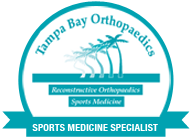Sometimes called “wear-and-tear” arthritis, osteoarthritis is a common condition that many people develop during middle age or older. In 2011, more than 28 million people in the United States were estimated to have osteoarthritis. It can occur in any joint in the body, but most often develops in weight-bearing joints, such as the hip.
Osteoarthritis of the hip causes pain and stiffness. It can make it hard to do everyday activities like bending over to tie a shoe, rising from a chair, or taking a short walk.
Because osteoarthritis gradually worsens over time, the sooner you start treatment, the more likely it is that you can lessen its impact on your life. Although there is no cure for osteoarthritis, there are many treatment options to help you manage pain and stay active
The hip is one of the body’s largest joints. It is a “ball-and-socket” joint. The socket is formed by the acetabulum, which is part of the large pelvis bone. The ball is the femoral head, which is the upper end of the femur (thighbone).
The bone surfaces of the ball and socket are covered with articular cartilage, a smooth, slippery substance that protects and cushions the bones and enables them to move easily.
The surface of the joint is covered by a thin lining called the synovium. In a healthy hip, the synovium produces a small amount of fluid that lubricates the cartilage and aids in movement.

Osteoarthritis is a degenerative type of arthritis that occurs most often in people 50 years of age and older, though it may occur in younger people, too.

In osteoarthritis, the cartilage in the hip joint gradually wears away over time. As the cartilage wears away, it becomes frayed and rough, and the protective joint space between the bones decreases. This can result in bone rubbing on bone. To make up for the lost cartilage, the damaged bones may start to grow outward and form bone spurs (osteophytes).
Osteoarthritis develops slowly and the pain it causes worsens over time.
Osteoarthritis has no single specific cause, but there are certain factors that may make you more likely to develop the disease, including:
Even if you do not have any of the risk factors listed above, you can still develop osteoarthritis.
The most common symptom of hip osteoarthritis is pain around the hip joint. Usually, the pain develops slowly and worsens over time, although sudden onset is also possible. Pain and stiffness may be worse in the morning, or after sitting or resting for a while. Over time, painful symptoms may occur more frequently, including during rest or at night. Additional symptoms may include:
During your appointment, Dr. Craythorne will talk with you about your symptoms and medical history, conduct a physical examination, and possibly order diagnostic tests, such as x-rays.
During the physical examination, Dr. Craythorne will look for:
X-rays. These imaging tests create detailed pictures of dense structures, like bones. X-rays of an arthritic hip may show a narrowing of the joint space, changes in the bone, and the formation of bone spurs (osteophytes).

Other imaging tests. Occasionally, a magnetic resonance imaging (MRI) scan, a computed tomography (CT) scan, or a bone scan may be needed to better determine the condition of the bone and soft tissues of your hip.
As with other arthritic conditions, early treatment of osteoarthritis of the hip is nonsurgical. Dr. Craythorne may recommend a range of treatment options.
Lifestyle modifications. Some changes in your daily life can protect your hip joint and slow the progress of osteoarthritis.
Physical therapy. Specific exercises can help increase range of motion and flexibility, as well as strengthen the muscles in your hip and leg. Dr. Craythorne or physical therapist can help develop an individualized exercise program that meets your needs and lifestyle.
Assistive devices. Using walking supports like a cane, crutches, or a walker can improve mobility and independence. Using assistive aids like a long-handled reacher to pick up low-lying things will help you avoid movements that may cause pain.
Medications. If your pain affects your daily routine, or is not relieved by other nonsurgical methods, Dr. Craythorne may add medication to your treatment plan.
Dr. Craythorne may recommend surgery if your pain from arthritis causes disability and is not relieved with nonsurgical treatment.
Osteotomy. Either the head of the thighbone or the socket is cut and realigned to take pressure off of the hip joint. This procedure is used only rarely to treat osteoarthritis of the hip.
Hip resurfacing. In this hip replacement procedure, the damaged bone and cartilage in the acetabulum (hip socket) is removed and replaced with a metal shell. The head of the femur, however, is not removed, but instead capped with a smooth metal covering.
Total hip replacement. Dr. Craythorne will remove both the damaged acetabulum and femoral head, and then position new metal, plastic or ceramic joint surfaces to restore the function of your hip.

After any type of surgery for osteoarthritis of the hip, there is a period of recovery. Recovery time and rehabilitation depends on the type of surgery performed.
Dr. Craythorne may recommend physical therapy to help you regain strength in your hip and to restore range of motion. After your procedure, you may need to use a cane, crutches, or a walker for a time.
In most cases, surgery relieves the pain of osteoarthritis and makes it possible to perform daily activities more easily.
508 S Habana Ave, Suite 335
Tampa Fl 33609
Privacy Policy
Copyright 2020 @ SRL Group. All rights reserved.
